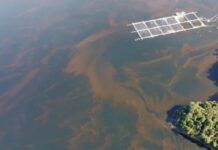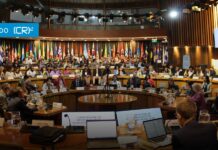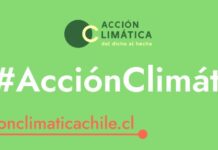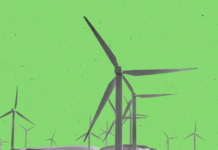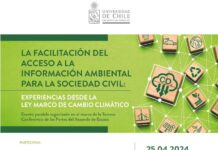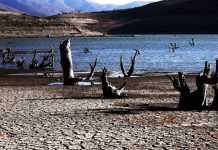| Protecting environmental flows to achieve long-term water security | Alvarez-Garreton C.; Boisier J.P.; Billi M.; Lefort I.; Marinao R.; Barría P. | Gobernanza e Interfaz Ciencia y Política; Agua y Extremos | 2023 | 10.1016/j.jenvman.2022.116914 | In this work, we propose a new approach to diagnose if a water allocation scheme is compatible with long-term water security at the catchment scale, and suggest steps to achieve such compatibility. We argue that when the remaining flow of a river after upstream withdrawals is not sufficient to safeguarding ecological river functions, the basin is at extreme risk of water scarcity, which indicates that the water management is failing. To test this, we analysed the water scarcity risks and the safeguarded environmental flows (e-flows) in 277 basins across a wide range of hydro-climatic conditions in Chile (17–55°S). For each basin, water scarcity risks were assessed based on water stress indices (WSIs, computed as the ratio of withdrawals to water availability), considering two water-use scenarios: (i) WSImax, where total withdrawals correspond to the maximum consumptive water allowed by the law, i.e., where only the e-flows protected by law remain in the river, and (ii) WSIalloc, where total withdrawals correspond to the actual allocated consumptive water uses within the basins. Further, we evaluated the adequacy of the water management system to protect ecological river functions by contrasting the e-flows protected in Chile with those safeguarded in six other countries. The water allocation system in Chile incorporated the protection of minimum e-flows in 2005 and established that these do not exceed 20% of the mean annual streamflow, except in some exceptional cases. This upper limit is consistently lower than the e-flows safeguarded in other countries, where 20%–80% of the mean annual streamflow are protected. This turns out in WSImax values between 80% and 100% in all basins, well above the threshold associated with over-committed basins under extreme risk of water scarcity (70% typically). When moving from the legally allowed to the actually allocated water use scenario, we found contrasting results: about 70% of the basins show low water scarcity risk (WSIalloc <40%), while an 18% have WSIalloc above 100%, indicating the allocation is going beyond current law limits and even beyond physical limits. Our results reveal that the link between e-flows, water allocation and water security has not been adequately incorporated in the current law. E-flows stipulated by law are insufficient to fulfil environmental requirements, while placing the basins under extreme risk of water scarcity if the total allowed withdrawals were exerted. To move towards a system that can effectively achieve long-term water security, we recommend: (i) To define tolerable water scarcity risks for basins, considering environmental requirements. (ii) To translate those risks into measurable basin indices to measure water security, such as the WSI. (iii) To set maximum water use limits (or minimum e-flows) within the basins that are compatible to the water security goals. If, under current and projected water availability conditions, the existing withdrawals exceed these limits, water managers should be able to adapt total consumption to the required limits. © 2022 The Authors | Journal of Environmental Management | 03014797 | https://linkinghub.elsevier.com/retrieve/pii/S0301479722024872 | art116914 | 328 | Thomson Reuters SCIE | chile; forecasting; rivers; water supply; chile; river water; water; catchment; climate change; resource allocation; streamflow; water availability; water management; water stress; water use; article; catchment area (hydrology); chile; climate change; environmental protection; risk assessment; river ecosystem; water availability; water flow; water insecurity; water management; water quality; water stress; water supply; forecasting; river; water supply, climate change; environmental flows; water allocation; water management; water security | Center for Climate and Resilience Research CR2, FONDAP 15110009, Santiago, Chile; Department of Geophysics, University of Chile, Santiago, Chile; Department of Rural Management and Innovation, Faculty of Agronomical Sciences, University of Chile, Chile; Núcleo de Estudios Sistémicos Transdisciplinarios (NEST.R3), Santiago, Chile; Department of Civil Engineering, Universidad de La Frontera, Temuco, Chile |
| Climatic control of the surface mass balance of the Patagonian Icefields | Carrasco-Escaff T.; Rojas M.; Garreaud R.D.; Bozkurt D.; Schaefer M. | Gobernanza e Interfaz Ciencia y Política; Agua y Extremos | 2023 | 10.5194/tc-17-1127-2023 | The Patagonian Icefields (Northern and Southern Patagonian Icefield) are the largest ice masses in the Andes Cordillera. Despite its importance, little is known about the main mechanisms that underpin the interaction between these ice masses and climate. Furthermore, the nature of large-scale climatic control over the surface mass variations of the Patagonian Icefields still remains unclear. The main aim of this study is to understand the present-day climatic control of the surface mass balance (SMB) of the Patagonian Icefields at interannual timescales, especially considering large-scale processes. We modeled the present-day (1980-2015) glacioclimatic surface conditions for the southern Andes Cordillera by statistically downscaling the output from a regional climate model (RegCMv4) from a 10km spatial resolution to a 450m resolution grid and then using the downscaled fields as input for a simplified SMB model. Series of spatially averaged modeled fields over the Patagonian Icefields were used to derive regression and correlation maps against fields of climate variables from the ERA-Interim reanalysis. Years of relatively high SMB are associated with the establishment of an anomalous low-pressure center near the Drake Passage, the Drake low, that induces an anomalous cyclonic circulation accompanied with enhanced westerlies impinging on the Patagonian Icefields, which in turn leads to increases in the precipitation and the accumulation over the icefields. Also, the Drake low is thermodynamically maintained by a core of cold air that tends to reduce the ablation. Years of relatively low SMB are associated with the opposite conditions. We found low dependence of the SMB on main atmospheric modes of variability (El Niño-Southern Oscillation, Southern Annular Mode), revealing a poor ability of the associated indices to reproduce the interannual variability of the SMB. Instead, this study highlights the Drake Passage as a key region that has the potential to influence the SMB variability of the Patagonian Icefields. © 2023 The Author(s). | Cryosphere | 19940416 | https://doi.org/10.5194/tc-17-1127-2023 | 1127-1149 | 17 | Thomson Reuters SCIE | nan, aisen; andes; chile; drake passage; northern patagonian ice field; southern patagonian ice field; annual variation; climate modeling; el nino-southern oscillation; ice field; mass balance; precipitation (climatology) | Department of Geophysics, University of Chile, Santiago, Chile; Center for Climate and Resilience Research, University of Chile, Santiago, Chile; Department of Meteorology, University of Valparaíso, Valparaíso, Chile; Instituto de Ciencias Físicas y Matemáticas, Universidad Austral de Chile, Valdivia, Chile |
| Disentangling the effect of future land use strategies and climate change on streamflow in a Mediterranean catchment dominated by tree plantations | Galleguillos M.; Gimeno F.; Puelma C.; Zambrano-Bigiarini M.; Lara A.; Rojas M. | Cambio de Uso de Suelo; Gobernanza e Interfaz Ciencia y Política; Agua y Extremos | 2021 | 10.1016/j.jhydrol.2021.126047 | Climate change (CC) along with Land Use and Land Cover Change (LULCC) have a strong influence in water availability in already fragile Mediterranean ecosystems. In this work the Soil and Water Assessment Tool (SWAT) was implemented for the 2006–2018 period in a rainfed catchment of central Chile (36°) to test the hypothesis that adaptive plantation strategies could mitigate the impacts of climate change and increase streamflow. We also hypothesize that afforestation with exotic tree plantations will reduce water availability in Mediterranean catchments, acting in synergy with climate change. Five LULCC scenarios are analyzed: i) current long-term national Forest Policy (FP), ii) extreme scenario (EX) with large afforestation surfaces, both including the replacement of native shrublands with Pinus radiata; iii) adaptive plantation management scenario (FM), with lower planting density, iv) forced land displacement scenario (FLD), where plantations at the headwaters are moved to lowland areas and replaced with native shrublands, and v) pristine scenario (PR), with only native vegetation. Each LULCC scenario was run with present climate and with projections of different CMIP5 climate models under the RCP 8.5 scenario for the period 2037–2050, and then compared against simulations based on the present land cover and climate. Simulations with the five LULCC scenarios (FP, EX, FM, FLD and PR) with present climate resulted in variations of −2.5, −17.3, 0, 2.3 and 10.9% on mean annual streamflow (Q), while simulations with the current land cover and CC projections produced a 32.1% decrease in mean annual Q. The joint impact of CC and LULCC leads to changes in mean annual Q ranging from −46.2% (EX) to –23.3% (PR). Afforestation with exotic pines will intensify the reduction in water yield, while conservative scenarios focused on native forests protection and restoration could partially mitigate the effect of CC. We make a strong call to rethink current and future land management strategies to cope with lower water availability in a drier future. © 2021 Elsevier B.V. | Journal of Hydrology | 00221694 | https://linkinghub.elsevier.com/retrieve/pii/S0022169421000949 | art126047 | 595 | Thomson Reuters SCIE | exotic plantations; hydrological response; lulcc; native shrubland; sdgs; swat, mediterranean region; pinus radiata; catchments; climate models; conservation; land use; reforestation; runoff; stream flow; land use and land cover change; land-use strategies; mediterranean catchment; mediterranean ecosystem; plantation managements; protection and restoration; soil and water assessment tool; water availability; afforestation; catchment; climate change; coniferous forest; coniferous tree; land cover; land use; land use change; shrubland; soil and water assessment tool; streamflow; tree planting; climate change | Department of Environmental Science and Renewable Natural Resources, University of Chile, Santiago, Chile; Center for Climate and Resilience Research (CR2), University of Chile, Santiago, Chile; Department of Civil Engineering, Universidad de La Frontera, Temuco, Chile; Instituto de Conservación, Biodiversidad y Territorio, Universidad Austral de Chile, Valdivia, Chile; Fundación Centro de los Bosques Nativos FORECOS, Valdivia, Chile; Department of Geophysics, University of Chile, Santiago, Chile |
| Diversifying Chile's climate action away from industrial plantations | Hoyos-Santillan J.; Miranda A.; Lara A.; Sepulveda-Jauregui A.; Zamorano-Elgueta C.; Gómez-González S.; Vásquez-Lavín F.; Garreaud R.D.; Rojas M. | Cambio de Uso de Suelo; Gobernanza e Interfaz Ciencia y Política; Agua y Extremos | 2021 | 10.1016/j.envsci.2021.06.013 | As president of the Climate Change Conference of the Parties, Chile has advocated for developing ambitious commitments to mitigate greenhouse gas emissions to achieve carbon-neutrality by 2050. However, Chile's motivations and ambitious push to reach carbon-neutrality are complicated by a backdrop of severe drought, climate change impacts (i.e., wildfires, tree mortality), and the use of industrial plantations as a mitigation strategy. This has become more evident as widespread and severe wildfires have impacted large areas of industrial plantations, transforming the land-use, land-use change, and forestry sector from a carbon sink to a net carbon source. Consequently, Chile must diversify its climate actions to achieve carbon-neutrality. Nature-based solutions, including wetlands-peatlands and oceans, represent alternative climate actions that can be implemented to tackle greenhouse gas emissions at a national level. Diversification, however, must guarantee Chile's long-term carbon sequestration capacity without compromising the ecological functionality of biodiverse tree-less habitats and native forest ecosystems. © 2021 Elsevier Ltd | Environmental Science and Policy | 14629011 | https://linkinghub.elsevier.com/retrieve/pii/S1462901121001738 | 85-89 | 124 | Thomson Reuters SCIE | carbon; biodiversity; building; carbon footprint; carbon sequestration; carbon sink; carbon source; chile; climate; climate change; drought; electric power plant; energy yield; forest; forestry; housing; land use; note; peatland; plantation; sea; tree; wetland; wildfire, carbon neutrality; climate action; native forest; nature-based solutions; net-zero; wildfires | School of Biosciences, University of Nottingham, Sutton Bonington, Loughborough, United Kingdom; Metropolitan Region, Santiago, Chile; Network for Extreme Environments Research, Universidad de La Frontera, La Araucanía, Temuco, Chile; Environmental Biogeochemistry in Extreme Ecosystems Laboratory, University of Magallanes, Punta Arenas, Magallanes, Chile; Laboratorio de Ecología del Paisaje y Conservación, Departamento de Ciencias Forestales, Universidad de La Frontera, La Araucanía, Temuco, Chile; Instituto de Conservación, Biodiversidad y Territorio, Universidad Austral de Chile, Valdivia, Los Ríos, Chile; Fundación Centro de los Bosques Nativos-FORECOS, Valdivia, Los Ríos, Chile; Departamento de Ciencias Naturales y Tecnología, Universidad de Aysén, Aysén, Coyhaique, Chile; Departamento de Biología-IVAGRO, Universidad de Cádiz, Puerto Real, Cádiz, Spain; Center for Fire and Socioecological Systems (FireSES), Universidad Austral de Chile, Valdivia, Los Ríos, Chile; School of Business and Economics, Universidad del Desarrollo, Metropolitan Region, Santiago, Chile; Center of Applied Ecology and Sustainability (CAPES), Pontifical Catholic University of Chile, Metropolitan Region, Santiago, Chile; Geophysics Department, University of Chile, Metropolitan Region, Santiago, Chile |
| Enfoque Transformación: Adaptación | Aldunce,P.;Rojas,M.;Guevara,G.;Álvarez,C.;Billi,M.;Ibarra,C.;Sapiains,R.; | Gobernanza e Interfaz Ciencia y Política; Agua y Extremos | 2021 | | El presente documento es un marco conceptual para la incorporación del enfoque
de transformación en las investigaciones de cambio climático con énfasis en la
adaptación y tiene el propósito de apoyar la aplicación del enfoque al trabajo de
investigación del (CR)2 a través de los Temas Integrativos de Floración de Algas Nocivas (FAN), de Seguridad Hídrica (TISHi) y de Gobernanza climática de los elementos.
El enfoque de transformación se compone de distintos conceptos y alcances, de los
que este documento presenta lo medular en tres secciones: (1) Conceptualización
de la transformación y conceptos relacionados; (2) Transformación y adaptación; y
(3) Preguntas orientadoras para la implementación del enfoque de la transformación. | | | https://bit.ly/3JbqskT | | | Not Indexed | | |
| Assessing snow accumulation patterns and changes on the Patagonian Icefields | Bravo C.; Bozkurt D.; Gonzalez-Reyes A.; Quincey D.J.; Ross A.N.; Farías-Barahona D.; Rojas M. | Gobernanza e Interfaz Ciencia y Política; Agua y Extremos | 2019 | 10.3389/fenvs.2019.00030 | Recent evidence shows that most Patagonian glaciers are receding rapidly. Due to the lack of in situ long-term meteorological observations, the understanding of how glaciers are responding to changes in climate over this region is extremely limited, and uncertainties exist in the glacier surface mass balance model parameterizations. This precludes a robust assessment of glacier response to current and projected climate change. An issue of central concern is the accurate estimation of precipitation phase. In this work, we have assessed spatial and temporal patterns in snow accumulation in both the North Patagonia Icefield (NPI) and South Patagonia Icefield (SPI). We used a regional climate model, RegCM4.6 and four Phase Partitioning Methods (PPM) in addition to short-term snow accumulation observations using ultrasonic depth gauges (UDG). Snow accumulation shows that rates are higher on the west side relative to the east side for both icefields. The values depend on the PPM used and reach a mean difference of 1,500 mm w.e., with some areas reaching differences higher than 3,500 mm w.e. These differences could lead to divergent mass balance estimations depending on the scheme used to define the snow accumulation. Good agreement is found in comparing UDG observations with modeled data on the plateau area of the SPI during a short time period; however, there are important differences between rates of snow accumulation determined in this work and previous estimations using ice core data at annual scale. Significant positive trends are mainly present in the autumn season on the west side of the SPI, while on the east side, significant negative trends in autumn were observed. Overall, for the rest of the area and during other seasons, no significant changes can be determined. In addition, glaciers with positive and stable elevation and frontal changes determined by previous works are related to areas where snow accumulation has increased during the period 2000-2015. This suggests that increases in snow accumulation are attenuating the response of some Patagonian glaciers to warming in a regional context of overall glacier retreat. © 2019 Bravo, Bozkurt, Gonzalez-Reyes, Quincey, Ross, Farías-Barahona and Rojas. | Frontiers in Environmental Science | 2296665X | https://www.frontiersin.org/article/10.3389/fenvs.2019.00030/full | art30 | 7 | Thomson Reuters SCIE | glacier mass-balance; patagonian icefields; regional climate model; snow accumulation; snow trends, nan | School of Geography, University of Leeds, Leeds, United Kingdom; Center for Climate and Resilience Research, Universidad de Chile, Santiago, Chile; Department of Geophysics, Universidad de Chile, Santiago, Chile; Instituto de Ciencias de la Tierra, Facultad de Ciencias, Universidad Austral de Chile, Valdivia, Chile; School of Earth and Environment, University of Leeds, Leeds, United Kingdom; Institut für Geographie, Friedrich-Alexander-Universität Erlangen-Nürnberg, Erlangen, Germany |
| On the evaluation of adaptation practices: a transdisciplinary exploration of drought measures in Chile | Lillo-Ortega G.; Aldunce P.; Adler C.; Vidal M.; Rojas M. | Gobernanza e Interfaz Ciencia y Política; Agua y Extremos | 2019 | 10.1007/s11625-018-0619-5 | A severe drought has affected central Chile since 2009. Various adaptation responses have been developed, and a participatory process is required to learn from them. To enable this, a transdisciplinary approach was adopted to achieve two objectives: first, to test an approach for assessing the effectiveness of existing measures to respond to drought, specifically to distil strengths and weaknesses of implementation, and developing recommendations; second, to reflect on results from a pilot project conducted to ascertain its potential for scalability in terms of processes employed. The research was organized per the three types of knowledge needed to address complex problems through transdisciplinarity: systems, target and transformation knowledge. Using the recent drought as a boundary object, we conducted the pilot in two locations in Chile where we carried out literature reviews, interviews and focus group discussions were carried out. We identified adaptation measures at national and local scale, a set of which were evaluated applying the Index for the Usefulness of Adaptation Practices (IUPA). Results indicate that through IUPA, we could systematically account for the perceived effectiveness of applied measures. Strengths such as autonomy in the decision-making process emerged as key factors that could also be applied in other contexts, whereas weaknesses such as lack of integration with other policy domains, programs or projects were identified. To address weaknesses, key recommendations were proposed, which are congruent with context-specific expectations, capacities, experiences and knowledge, given that they were articulated by local actors. Results present empirical evidence on the important utility of transdisciplinary approaches in the evaluation of adaptation measures and can support the development of metrics related to adaptation process at the local scale. © 2018, Springer Japan KK, part of Springer Nature. | Sustainability Science | 18624065 | http://link.springer.com/10.1007/s11625-018-0619-5 | 1057-1069 | 14 | Thomson Reuters SCIE | nan, chile; drought; evaluation of adaptation; index for the usefulness of adaptation practices (iupa); resilience; transdisciplinarity | Center for Climate and Resilience Research (CR)2, Blanco Encalada 2002, 4th Floor, Santiago, 8370449, Chile; Department of Environmental Science and Natural Resources Management, University of Chile, Avenida Santa Rosa 11315, La Pintana, Santiago, Chile; Transdisciplinarity Lab (TdLab), Department of Environmental Systems Science, ETH Zurich, Universitaetstrasse 22, Zurich, 8092, Switzerland; Mountain Research Initiative, Institute of Geography, University of Bern, c/o Hallerstrasse 12, Bern, 3012, Switzerland; Department of Geophysics, University of Chile, Blanco Encalada 2002, Santiago, Chile |
| Holocene glacier fluctuations in Patagonia are modulated by summer insolation intensity and paced by Southern Annular Mode-like variability | Reynhout S.A.; Sagredo E.A.; Kaplan M.R.; Aravena J.C.; Martini M.A.; Moreno P.I.; Rojas M.; Schwartz R.; Schaefer J.M. | Gobernanza e Interfaz Ciencia y Política; Agua y Extremos | 2019 | 10.1016/j.quascirev.2019.05.029 | Alpine glaciers are sensitive indicators of changes in climate, and their ubiquity in mountainous regions make them valuable proxies for terrestrial climate reconstructions worldwide. However, the timing and extent of glacier change across the South American mid-latitudes through the Holocene are still poorly constrained relative to their counterparts in the Northern Hemisphere. Here we report a new 10Be surface exposure-based chronology of moraines recording a series of progressively less-extensive glacier advances of Glaciar Torre (Argentina, 49.3°S/73.0°W) since the Last Glacial Maximum, with expansions culminating at 17,600 ± 900, 13,500 ± 500, 9700 ± 400, 6900 ± 200, 6100 ± 300, 4500 ± 200, and 530 ± 60 yr BP. The declining magnitude of Holocene glacier expansions parallels a gradual rise in local summer insolation intensity during the Holocene, while individual advances occurred during inferred negative Southern Annular Mode (SAM)-like states at centennial to millennial timescales. These observations suggest that (i) summer insolation intensity modulated antiphased trends in glacier extent in the polar hemispheres during the Holocene, and that (ii) centennial-scale ‘SAM-like’ temperature and precipitation anomalies paced glacier fluctuations throughout Patagonia. Given the persistence of the inferred ’SAM-like’ anomalies throughout the Holocene, the modern measured trend towards positive SAM index conditions could mark the onset of a fundamental shift in the climate of the Southern Hemisphere midlatitudes that warrants consideration in projections of future climate. © 2019 | Quaternary Science Reviews | 02773791 | https://linkinghub.elsevier.com/retrieve/pii/S0277379119300745 | 178-187 | 220 | Thomson Reuters SCIE | argentina; patagonia; expansion; geomorphology; glacial geology; cosmogenic isotopes; glacial; glaciation; holocenes; paleoclimatology; south america; southern annular mode; chronology; geomorphology; glacier advance; holocene; insolation; last glacial maximum; midlatitude environment; mountain region; paleoclimate; precipitation (climatology); reconstruction; southern hemisphere; summer; incident solar radiation, cosmogenic isotopes; geomorphology; glacial; glaciation; holocene; insolation; paleoclimatology; south america; southern annular mode | Departamento de Geología, Facultad de Ciencias Físicas y Matemáticas, Universidad de Chile, Plaza Ercilla 803, Santiago, 8370450, Chile; Núcleo Milenio Paleoclima, Universidad de Chile, Las Palmeras 3425, Ñuñoa, Chile; Instituto de Geografía, Pontificia Universidad Católica de Chile, Avenida Vicuña Mackenna 4860, Macul, 7820436, Chile; Lamont-Doherty Earth Observatory, P.O. Box 1000, 61 Route 9W, Palisades, 10964-100, NY, United States; Centro de Investigación Gaia Antártica, Universidad de Magallanes, Avenida Bulnes 01855, Punta Arenas, 62000009, Chile; Centro de Investigaciones en Ciencias de la Tierra (CONICET-Facultad de Ciencias Exactas, Físicas y Naturales, UNC), Vélez Sársfeld 1611, Córdoba, X5016GCA, Argentina; Departamento de Ciencias Ecológicas, Facultad de Ciencias, Universidad de Chile, Las Palmeras 3425, Ñuñoa, Chile; Departamento de Geofísica, Facultad de Ciencias Físicas y Matemáticas, Universidad de Chile, Avenida Blanco Encalada, Santiago, 2002, Chile; Department of Earth and Environmental Sciences of Columbia University, New York, 10027, NY, United States; Center for Climate and Resilience Research (CR2), Blanco Encalada 2002, Santiago, Chile |
| Comité Científico COP25: Transformation from science to decision making | Moser,S.;Aldunce,P.;Rudnick,A.;Rojas,M.;Muñoz,L.; | Gobernanza e Interfaz Ciencia y Política; Agua y Extremos | 2019 | | The IPCC2 understands Transformations as systemic changes that enable more ambitious, i.e., significant and rapid, advances in mitigation and adaptation than currently being observed, while also pursuing the Sustainable Development Goals of Agenda 2030. While challenging, deep and difficult transformational change is seen as an opportunity to improve human and natural conditions. Mitigation, adaptation and sustainability should thus be seen as complementary, not competing goals. Transformation means going beyond the familiar in policy- and decision-making, with actors in all sectors focused on shifting the conditions that hold damaging systems in place. | | | https://www.minciencia.gob.cl/comitecientifico/documentos/mesa-adaptacion/4.Adaptation-Transformation-Policy-Brief.pdf | | | Not Indexed | | |
| Comité Científico COP25: Transformación desde la ciencia a la toma de decisiones | Moser,S.;Aldunce,P.;Rudnick,A.;Rojas,M.;Muñoz,L.; | Gobernanza e Interfaz Ciencia y Política; Agua y Extremos | 2019 | | El IPCC2 entiende por transformación aquellos cambios sistémicos que permiten avances más ambiciosos en mitigación y adaptación, es decir, significativos y rápidos, más allá de lo observado en la actualidad, y que al mismo tiempo persigan los Objetivos de Desarrollo Sostenible (ODS) de la Agenda 2030. Si bien los cambios transformadores pueden ser desafiantes, profundos y difíciles, también constituyen una oportunidad para mejorar las condiciones de la sociedad y de la naturaleza. La mitigación, la adaptación y la transformación no deben considerarse como enfoques competitivos, sino como complementarios. La transformación significa ir más allá de lo que se ha hecho hasta ahora en la política y toma de decisiones. Para lograrlo, se requieren actores de todos los sectores, enfocados en cambiar las condiciones para mantener y mejorar los sistemas dañados | | | https://www.minciencia.gob.cl/comitecientifico/documentos/mesa-adaptacion/3.Adaptacion-Transformacion-Resumen-de-politicas.pdf | | | Not Indexed | | |
| Projected hydroclimate changes over Andean basins in central Chile from downscaled CMIP5 models under the low and high emission scenarios | Bozkurt D.; Rojas M.; Boisier J.P.; Valdivieso J. | Gobernanza e Interfaz Ciencia y Política; Agua y Extremos | 2018 | 10.1007/s10584-018-2246-7 | This study examines the projections of hydroclimatic regimes and extremes over Andean basins in central Chile (∼ 30–40° S) under a low and high emission scenarios (RCP2.6 and RCP8.5, respectively). A gridded daily precipitation and temperature dataset based on observations is used to drive and validate the VIC macro-scale hydrological model in the region of interest. Historical and future simulations from 19 climate models participating in CMIP5 have been adjusted with the observational dataset and then used to make hydrological projections. By the end of the century, there is a large difference between the scenarios, with projected warming of ∼ + 1.2 °C (RCP2.6), ∼ + 3.5 °C (RCP8.5) and drying of ∼ − 3% (RCP2.6), ∼ − 30% (RCP8.5). Following the strong drying and warming projected in this region under the RCP8.5 scenario, the VIC model simulates decreases in annual runoff of about 40% by the end of the century. Such strong regional effect of climate change may have large implications for the water resources of this region. Even under the low emission scenario, the Andes snowpack is projected to decrease by 35–45% by mid-century. In more snowmelt-dominated areas, the projected hydrological changes under RCP8.5 go together with more loss in the snowpack (75–85%) and a temporal shift in the center timing of runoff to earlier dates (up to 5 weeks by the end of the century). The severity and frequency of extreme hydroclimatic events are also projected to increase in the future. The occurrence of extended droughts, such as the recently experienced mega-drought (2010–2015), increases from one to up to five events per 100 years under RCP8.5. Concurrently, probability density function of 3-day peak runoff indicates an increase in the frequency of flood events. The estimated return periods of 3-day peak runoff events depict more drastic changes and increase in the flood risk as higher recurrence intervals are considered by mid-century under RCP2.6 and RCP8.5, and by the end of the century under RCP8.5. © 2018, Springer Nature B.V. | Climatic Change | 01650009 | http://link.springer.com/10.1007/s10584-018-2246-7 | 131-147 | 150 | Thomson Reuters SCIE | nan, andes; chile; climate change; drought; floods; image segmentation; probability density function; risk perception; runoff; daily precipitations; emission scenario; hydrological changes; hydrological modeling; low emission scenarios; recurrence intervals; region of interest; regional effects; air temperature; climate change; climate prediction; cmip; drought; extreme event; flood frequency; model validation; peak flow; precipitation (climatology); probability density function; runoff; scenario analysis; snowpack; climate models | Center for Climate and Resilience Research, University of Chile, Santiago, Chile; Department of Geophysics, Center for Climate and Resilience Research, University of Chile, Santiago, Chile; Department of Civil Engineering, University of Chile, Santiago, Chile |












